Pricing last updated on April 19, 2024 - 11:36 MDT. Pricing and images from Amazon Product Advertising API. Product prices and availability are accurate as of the date/time indicated and are subject to change. Any price and availability information displayed on Amazon at the time of purchase will apply to the purchase of this product.
Breville Polyscience Control Freak Owner?
Be sure to join our Facebook group to share recipes, techniques, and photos!
Sizzle and Sear Kitchen Equipment Deal Alerts In Your Inbox
What is induction?
Before I get started with the review, I’m going to explain what induction cooking is for my readers that are not familiar. If you are already familiar with induction, feel free to scroll down to the review.
Induction cooking technology differs from traditional cooking methods because it uses the direct induction heating of the cooking pan instead of radiation, convection, or thermal conduction. Induction accomplishes this through a magnetic field that directly heats up the pot and not the cooktop itself. Since the cooktop doesn’t heat up, it is much safer than traditional cooking. If you place your hand on an induction stove top that was just in use, it will only contain the residual heat from the pan. Induction is easier to cleanup than other electric cooktops because the temperature is much more regulated and the cooking surface is only indirectly heated. Induction allows for fast increases in temperatures, and unlike traditional electric stove tops, the changes in temperature are instantaneous.
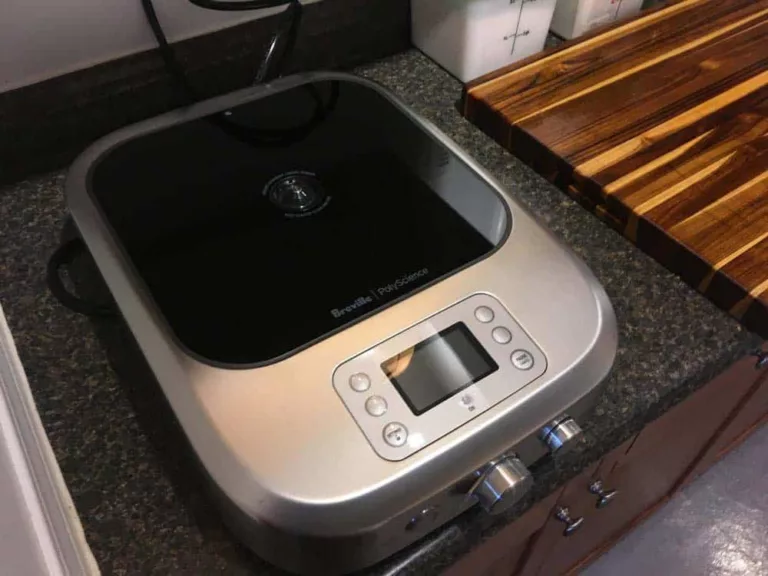
Pricing last updated on April 19, 2024 - 11:36 MDT. Pricing and images from Amazon Product Advertising API. Product prices and availability are accurate as of the date/time indicated and are subject to change. Any price and availability information displayed on Amazon at the time of purchase will apply to the purchase of this product.
What is the Breville PolyScience Control Freak?
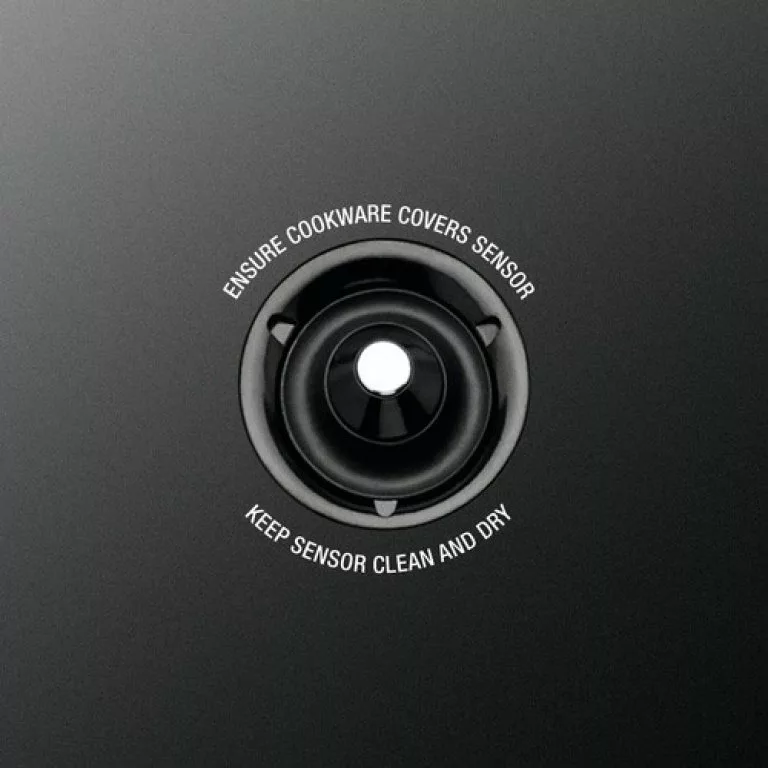
It is an induction cooktop built for the commercial kitchen, but it is very useful for the avid home cook. What makes it unique though is its ability to precisely hold any cooking temperature from 77°F to 482°F. It does this with both a “through the glass” temperature sensor that detects the pan/pot temperature and through a connected probe that measures the temperature of pot’s/pan’s contents. As the cook, you choose which one you want to use depending on what you are trying to achieve.
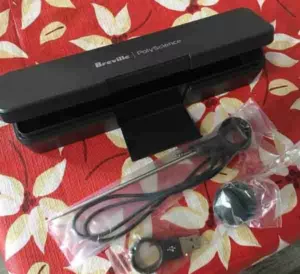
Pricing last updated on April 19, 2024 - 11:36 MDT. Pricing and images from Amazon Product Advertising API. Product prices and availability are accurate as of the date/time indicated and are subject to change. Any price and availability information displayed on Amazon at the time of purchase will apply to the purchase of this product.
Why the Breville PolyScience Control Freak?
When I first started looking for induction units, I had just graduated from teachers’ college and got my first contract in another city. I was temporarily living in a basement suite that came equipped with a $100 Salton induction unit and a generic toaster oven. As an avid home cook, I was not happy with this setup, and my first quest was to find a good portable induction unit for stove top cooking. When I came across the Breville PolyScience Control Freak, I was immediately interested, but I was intimidated by the high price tag. I kept my eye open for a deal, and I jumped on an opportunity to buy a discounted demo unit on eBay. This turned out to be one of the best kitchen purchase decisions I’ve ever made, and I have no regrets.
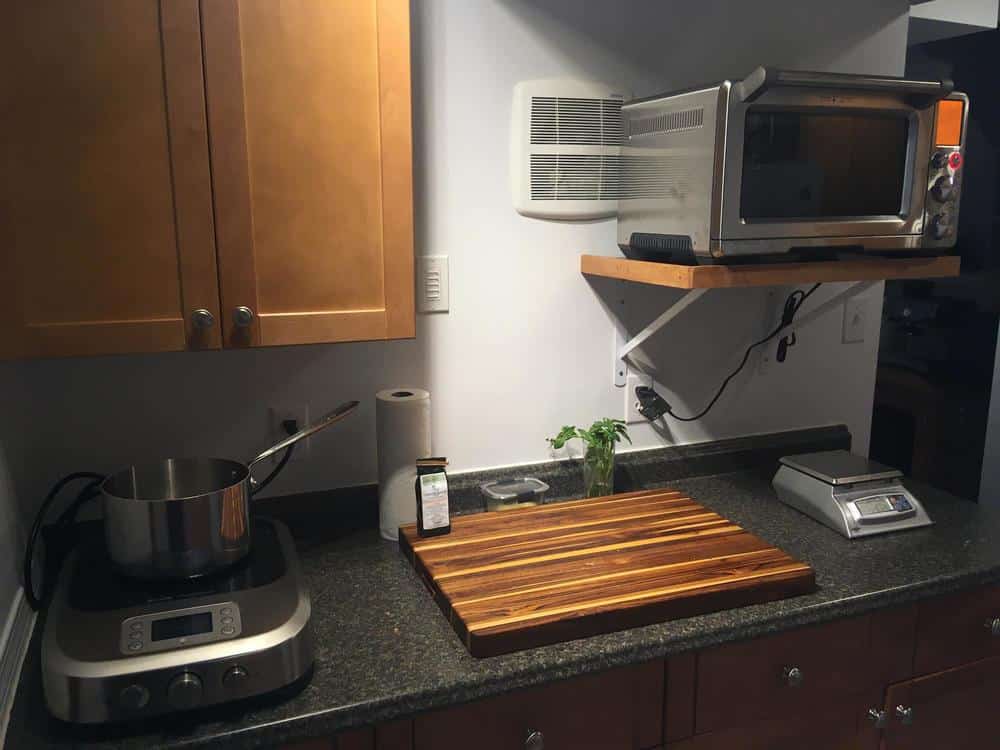
Super Accurate and Precise Temperatures on the Polyscience Control Freak
One of the first things I did when I got my unit was test out Breville’s/PolyScience’s claim of accurate and precise temperatures. I did this with my trusty Thermapen. I first tested boiling water using pan control at a random temperature (134°F) using pan control. Since pan control measures the temperature of the bottom of the pan, I did not expect it to correlate 100% with the temperature of the contents in the pan. Boy was I surprised. It took just a little bit of time for the water to match exactly what the Control Freak was saying the pan temperature was!
I also tested the accuracy of the probe control and got the same results. I knew based on this experimentation that cooking delicate foods, like custards and emulsions, would be a whole lot easier using the Control Freak.
Walk-Away Cooking of Delicate Foods on the Breville Control Freak
With precise pan control, I’ve learned ideal temperatures for cooking ingredients that can easily burn if not monitored carefully. Now I can sweat garlic, brown butter, temper chocolate, caramelize onions, make caramel, and create custards without worrying about anything burning. In fact, one of the first things I made using the Control Freak was a caramel sauce, and I was able to leave the kitchen and do some chores in the living room without worrying about burning the sugar. Unheard of!
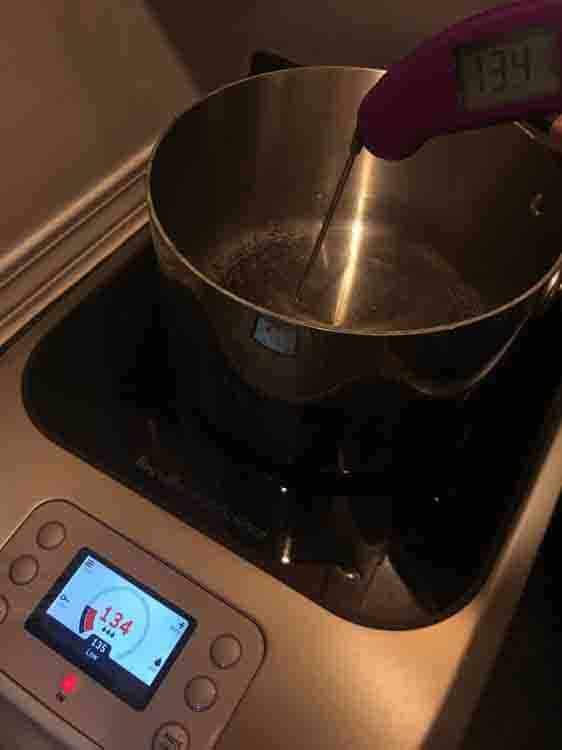
Pricing last updated on April 19, 2024 - 11:36 MDT. Pricing and images from Amazon Product Advertising API. Product prices and availability are accurate as of the date/time indicated and are subject to change. Any price and availability information displayed on Amazon at the time of purchase will apply to the purchase of this product.
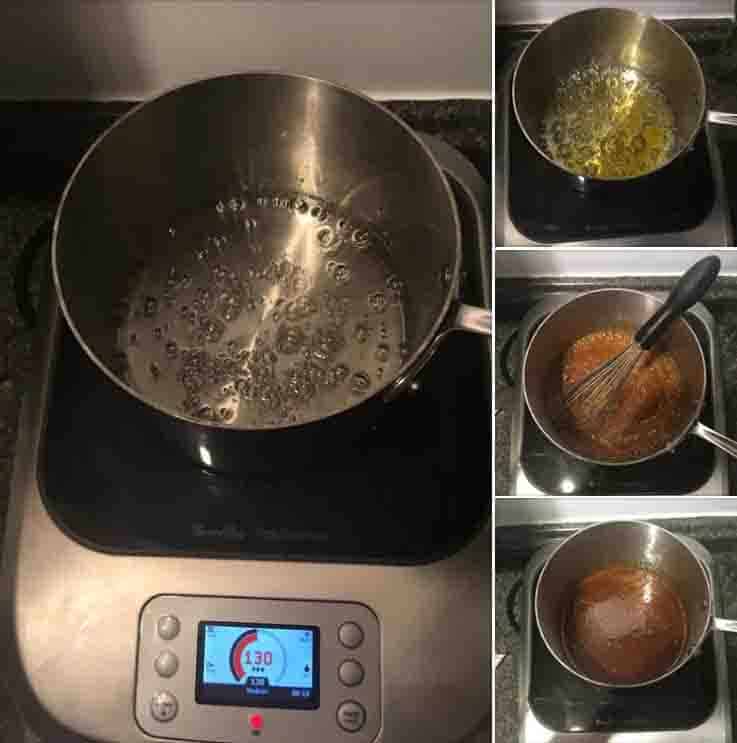
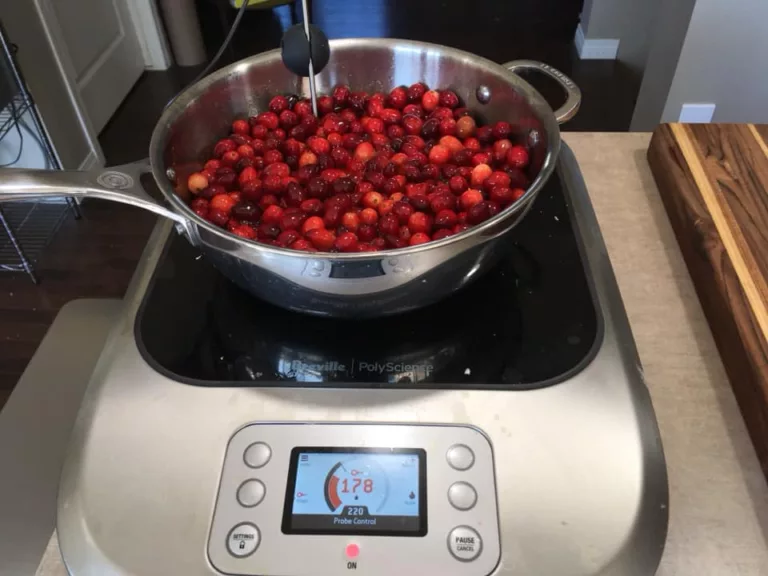
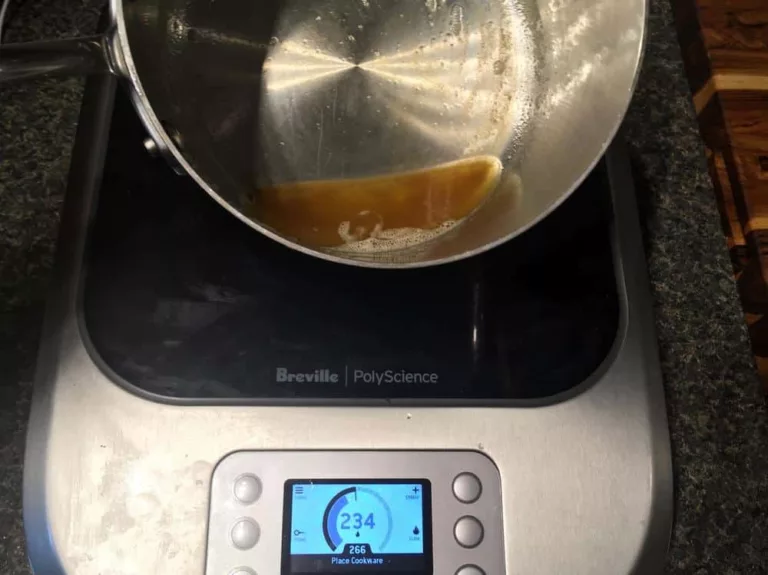
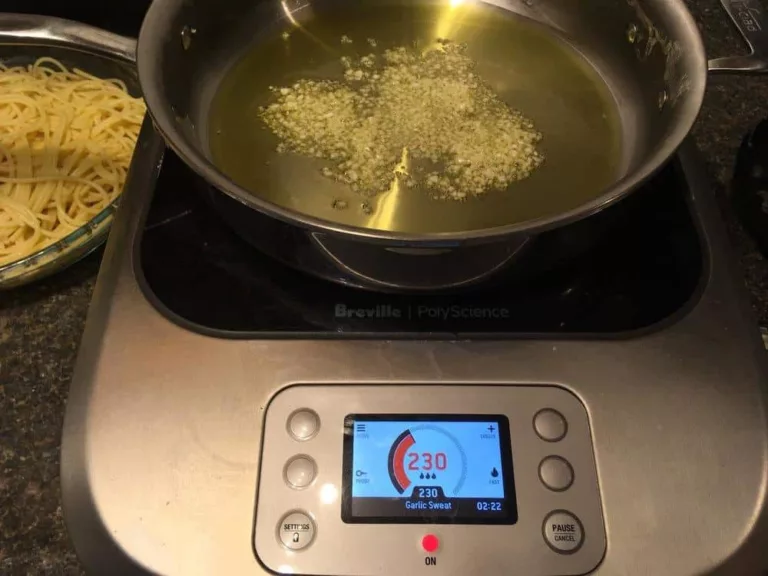
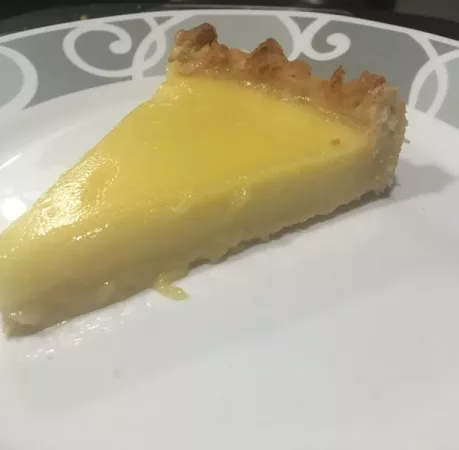
I even made some butterscotch pudding from scratch effortlessly on the Control Freak:
Pricing last updated on April 19, 2024 - 11:36 MDT. Pricing and images from Amazon Product Advertising API. Product prices and availability are accurate as of the date/time indicated and are subject to change. Any price and availability information displayed on Amazon at the time of purchase will apply to the purchase of this product.
Safe and Easy Deep Frying with the Breville Polyscience Control Freak
I like deep fried chicken wings, french fries, and donuts as much as the next guy. But doing deep frying at home has always meant a hard-to-clean dedicated appliance or closely monitoring a dangerously hot pot of oil on the stove top. With the probe control on the Control Freak, I don’t need to clean another appliance, and the induction cooker monitors the temperature of the oil for me. The precision of probe control is bang on, which allows me to be confident when deep frying. So far I’ve deepfried Heston Blumenthal’s triple cooked french fries, Modernist Cuisine’s Korean chicken wings, Chinese orange chicken, and vegetable pakora. For each of these applications, the temperature of the oil quickly recovered after the food was added. I’ve been fully satisfied with the deepfrying performance of the Control Freak.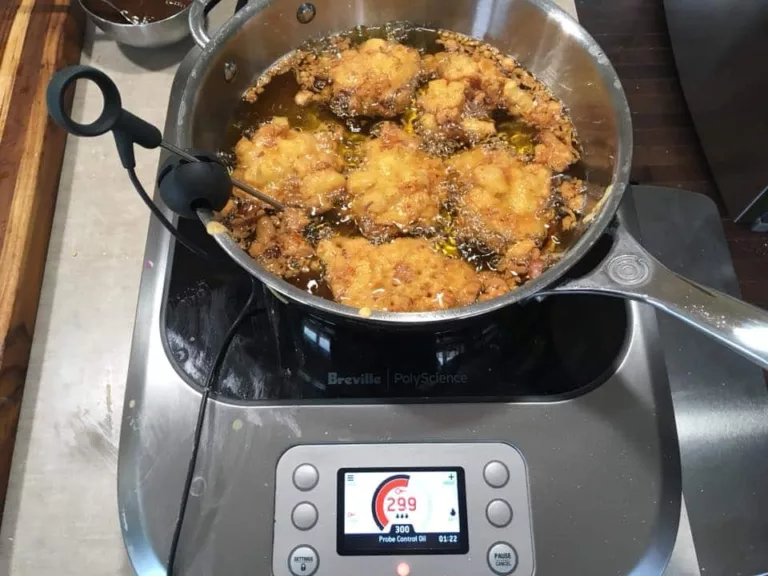

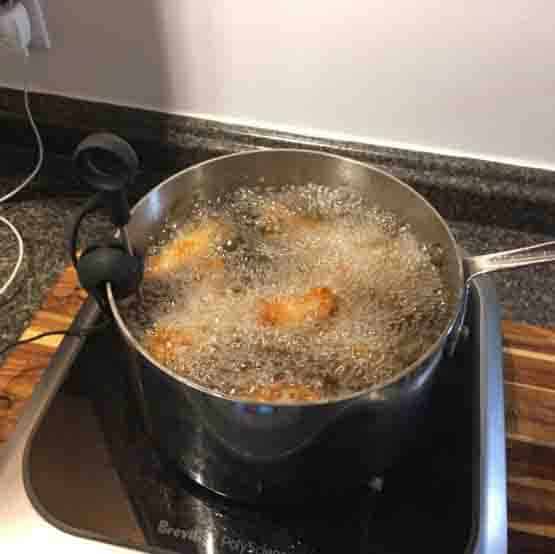
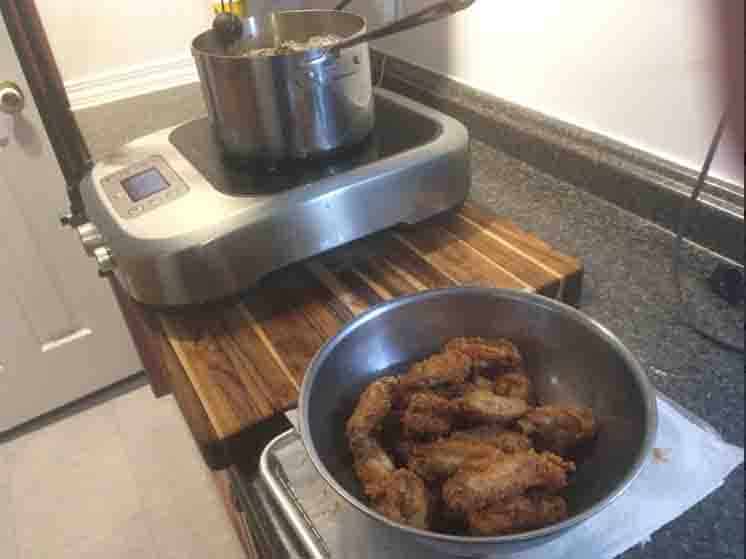


Finally, one of my favorite things about the Control Freak is the ability to program in your temperatures. Figure out the perfect temperature to make your sunny side up eggs? Don’t worry about forgetting it. Program it in with your temperature and time. You can even tell the Control Freak what to do after the timer runs out (continue cooking at set temperature and count upwards, turn off the heat, keep warm at 140°F, or repeat the timer). This is very useful! I only wish you could program multistage recipes where the temperature will change to a selected new temperature after the first timer is finished; right now, you can only change the temperature to 140°F by using the “Keep Warm” setting. It would also be nice if you could add programs to the USB stick using your computer. It can be bit of a pain typing in the recipe’s name using the the unit’s knob. If you’re listening Breville, maybe include these requests in a future firmware update? 😉
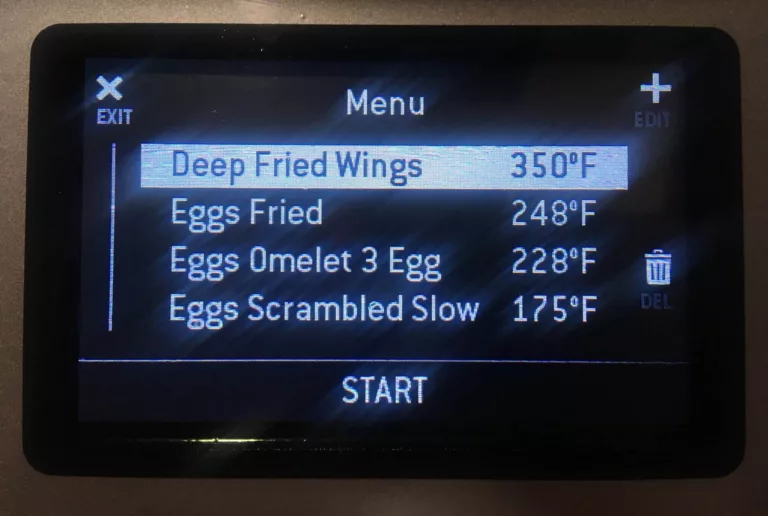
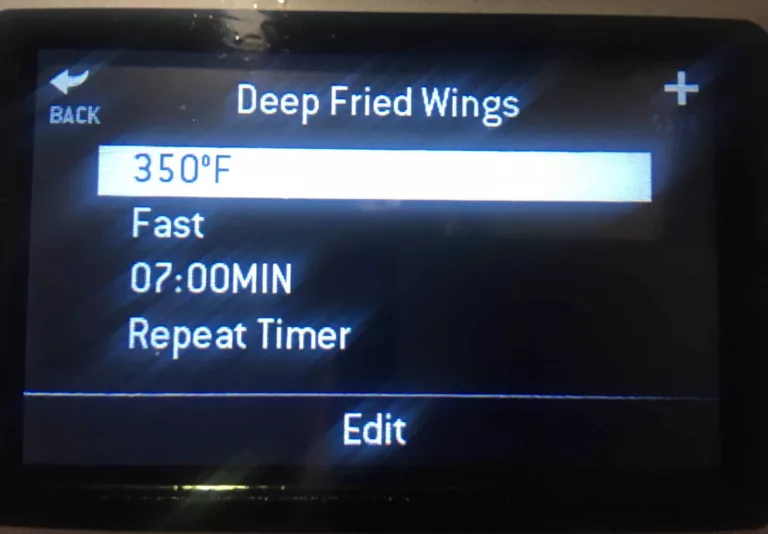
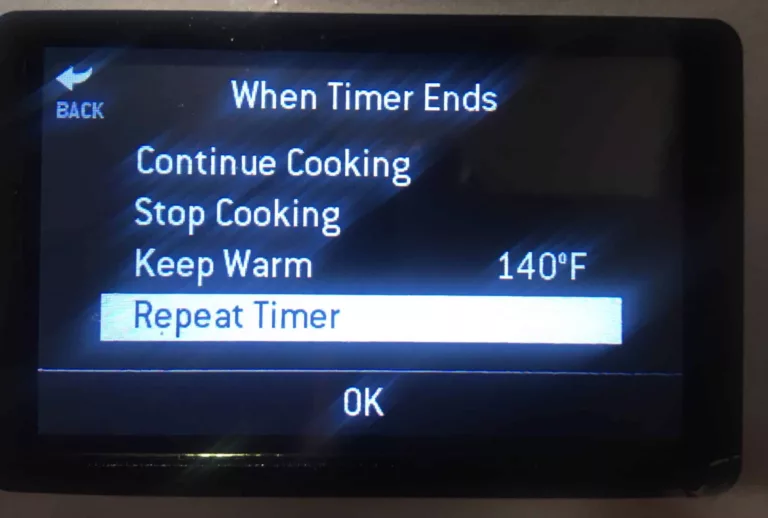
The Control Freak also comes with a nifty travel and storage bag. I’m not a caterer, but I use the travel bag to take my Control Freak to potlucks, dinner parties, and work (I’m currently a foods teacher)! I pair it with my chef knife backpack, and I practically have an entire kitchen ready to travel with me.
Throughout my first year of owning the Control Freak, I posted my findings on the eGullet forum. I collaborated with members on the forum to create a database of cooking temperatures that work with the Control Freak’s style of cooking. Click here to see the database, and feel free to contribute through the comment section. I will update the database regularly with readers’ suggestions.

Pricing last updated on April 19, 2024 - 11:36 MDT. Pricing and images from Amazon Product Advertising API. Product prices and availability are accurate as of the date/time indicated and are subject to change. Any price and availability information displayed on Amazon at the time of purchase will apply to the purchase of this product.
More images of my experience with the Breville PolyScience Control Freak:
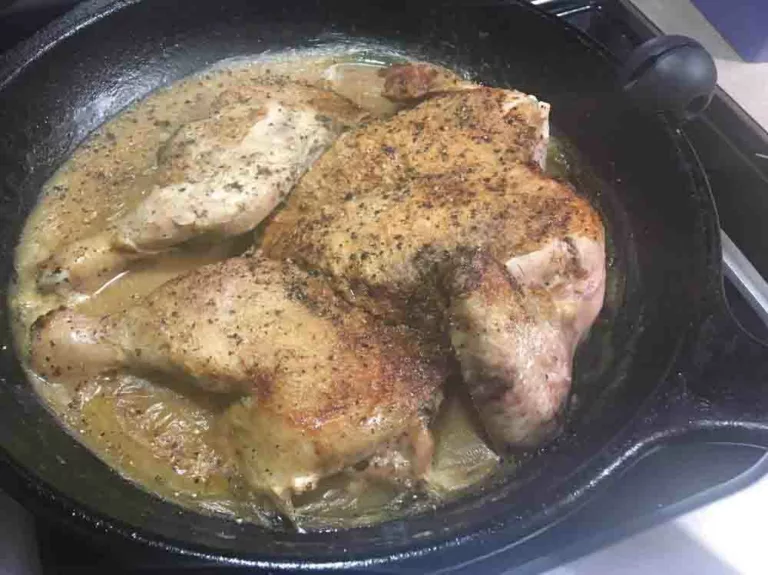
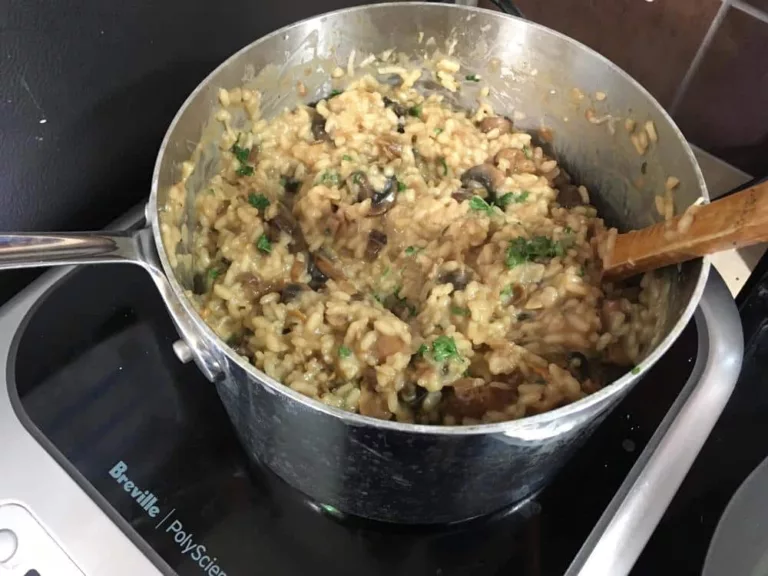

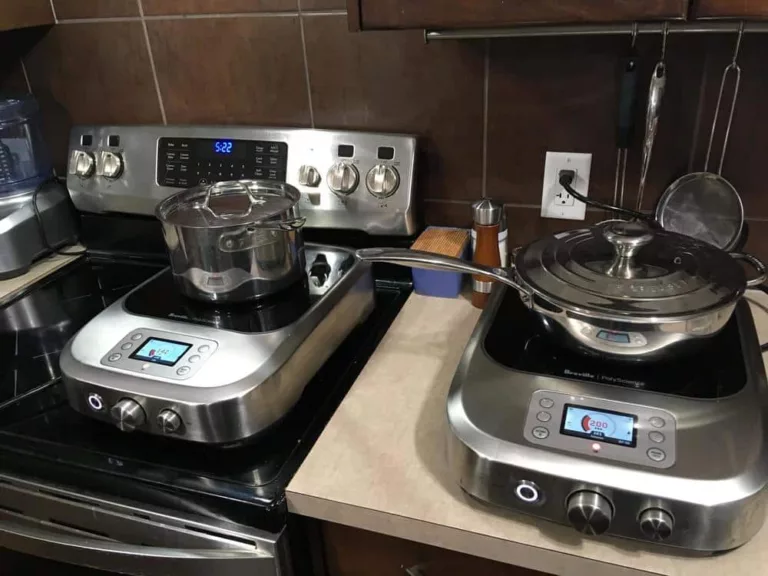
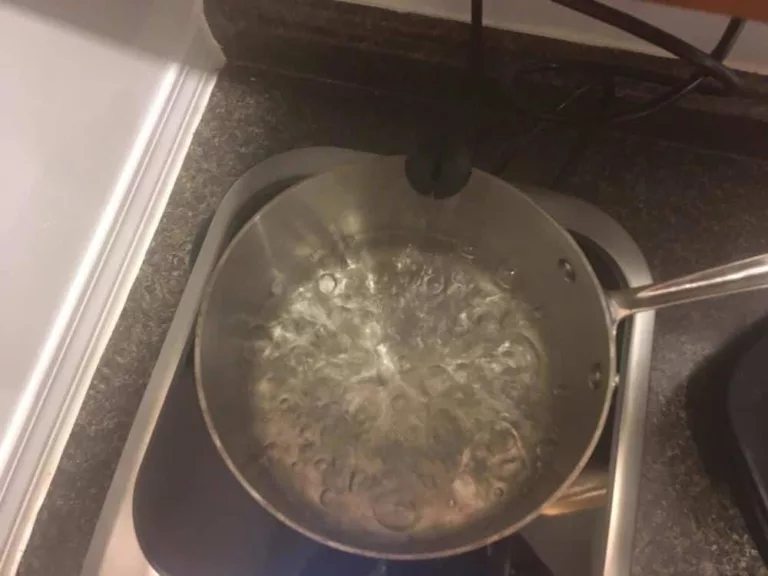
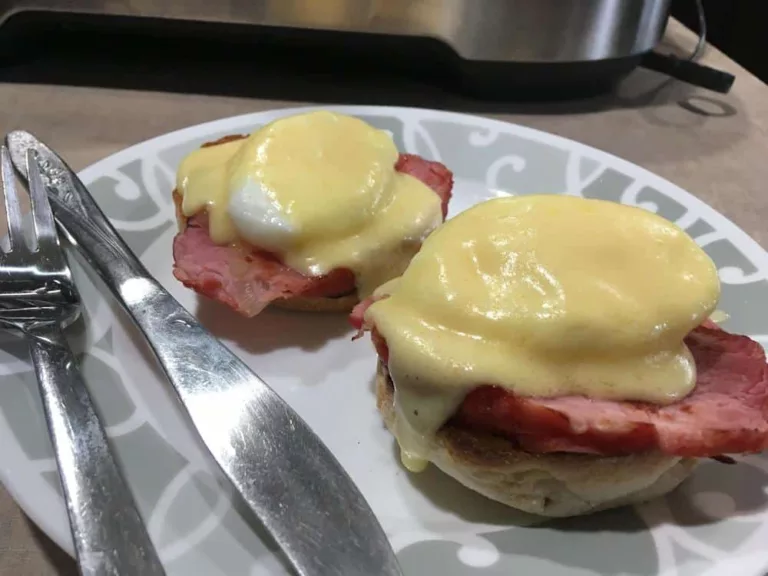

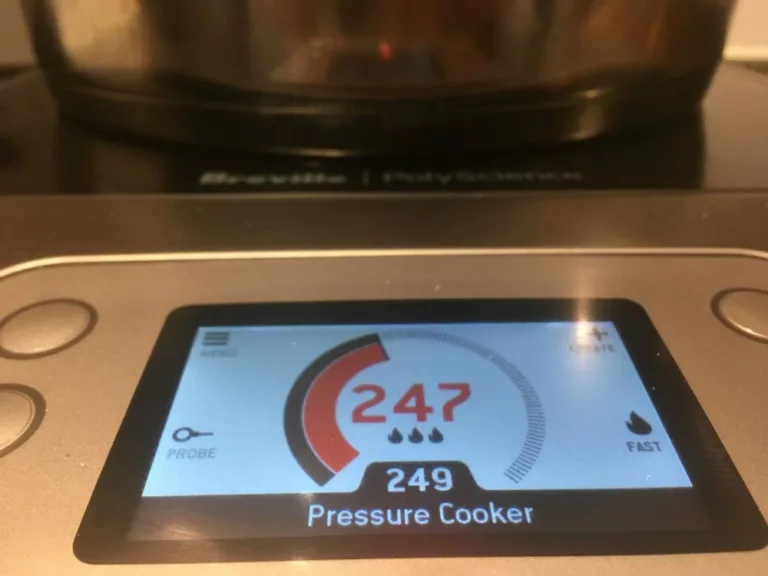
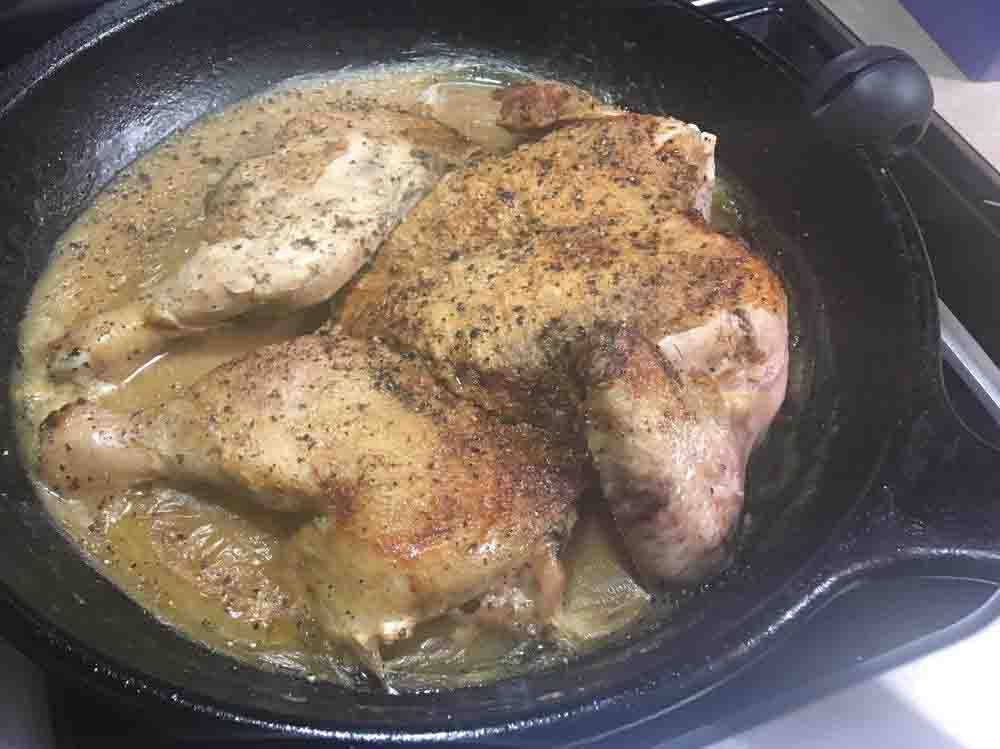
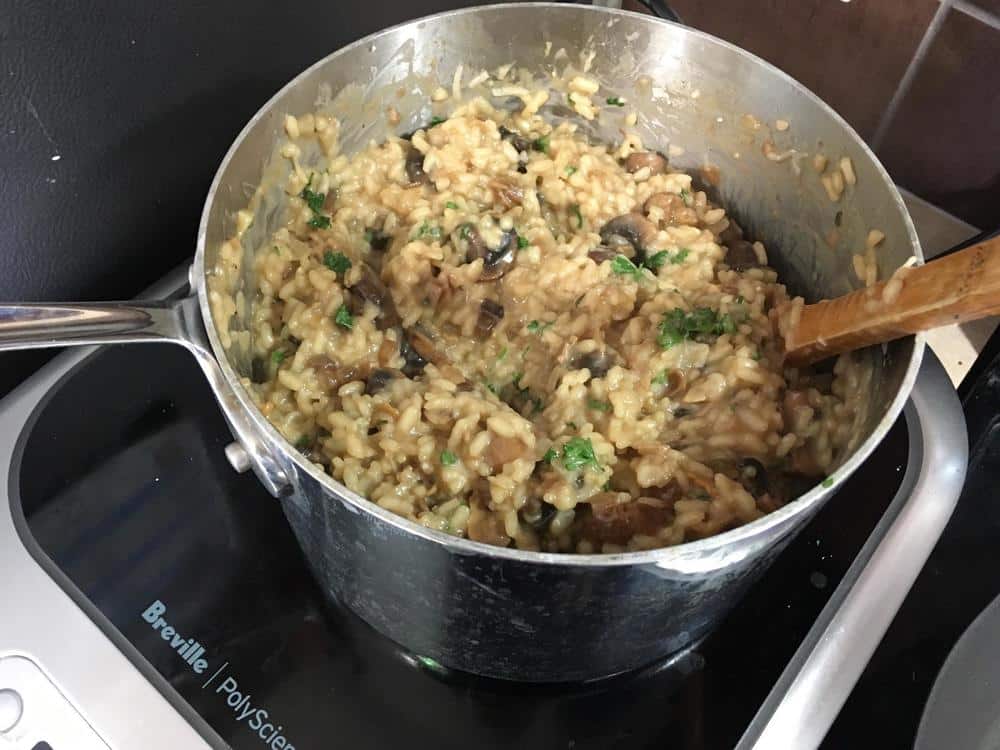
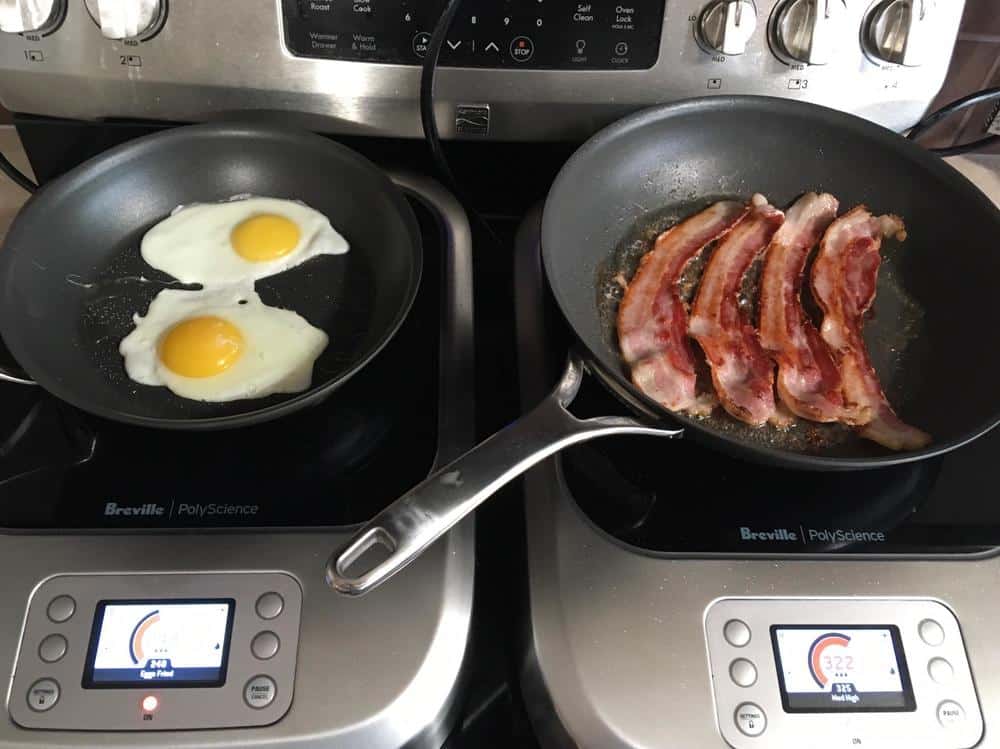

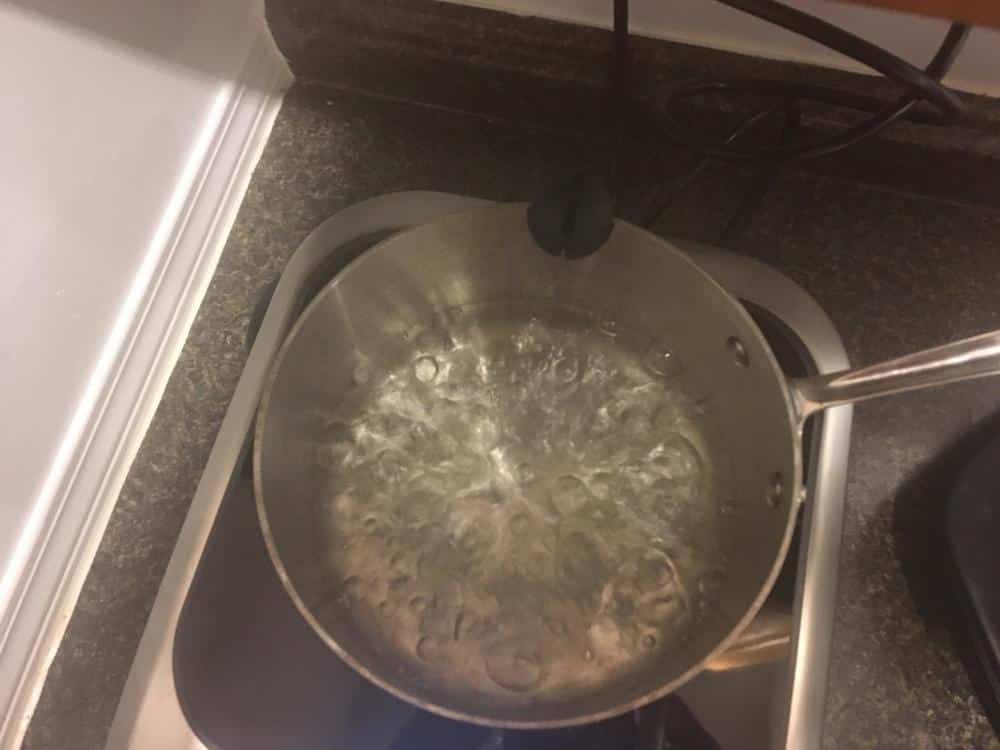
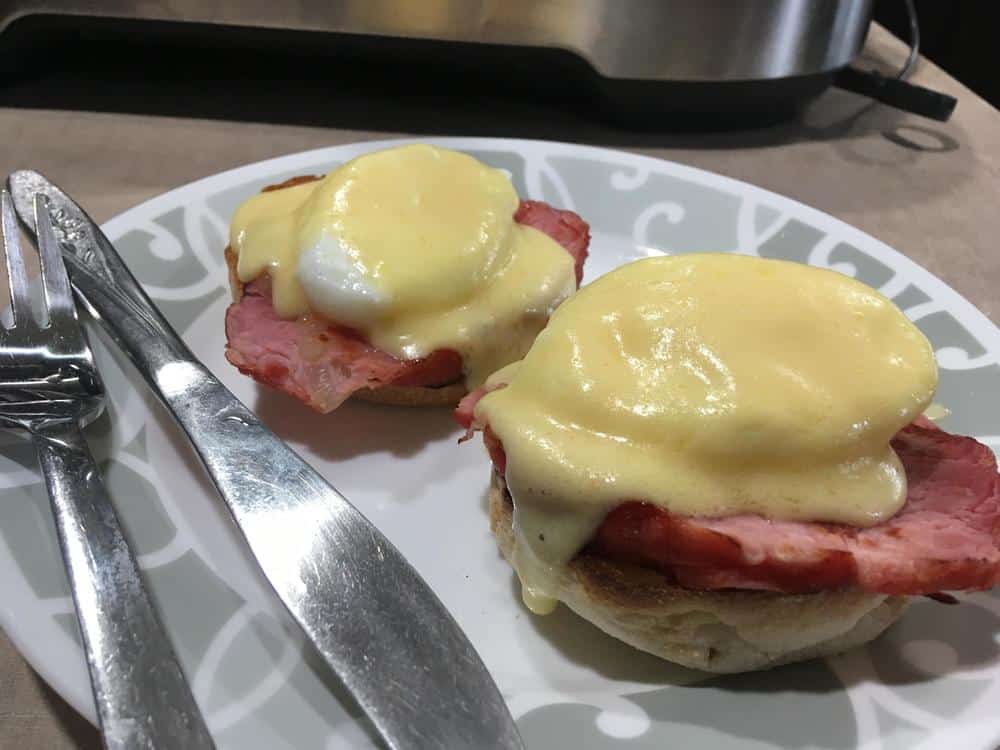

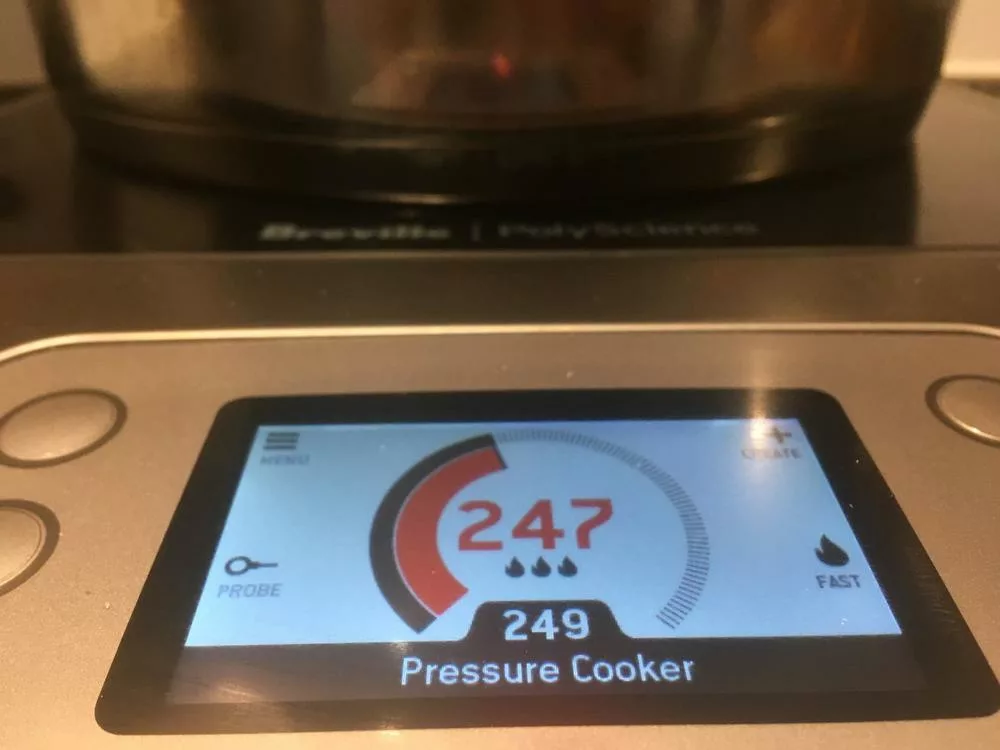
In Europe, the Breville Polyscience Control Freak is known as the Sage Control Freak; don’t worry, they are manufactured by the same company. Do you own the Breville Polyscience Control Freak? I’d love to hear about your experience with it in the comments below.
Highly Recommended
Pricing last updated on April 19, 2024 - 11:36 MDT. Pricing and images from Amazon Product Advertising API. Product prices and availability are accurate as of the date/time indicated and are subject to change. Any price and availability information displayed on Amazon at the time of purchase will apply to the purchase of this product.
Favorite Pans for Breville PolyScience Control Freak
My favorite pans to use with induction are pans with a heavy amount of aluminum or copper in them due to their superior heat distribution properties. Personally I use Demeyere Proline/Atlantis and All Clad pans on my Control Freak. I’ve actually done some in-depth testing of 17 different pieces of cookware on the Control Freak and published my findings in this article.
- Manufactured in Belgium
- Impressive 7-ply construction
- Patented Silvinox surface treatment - stainless steel maintains silvery finish, resists fingerprints and is easy to clean
- Flatbase stability - pan won't warp when heated
- Stay-cool 18/10 stainless steel handles are securely welded and extremely hygienic
Pricing last updated on April 19, 2024 - 8:15 MDT. Pricing and images from Amazon Product Advertising API. Product prices and availability are accurate as of the date/time indicated and are subject to change. Any price and availability information displayed on Amazon at the time of purchase will apply to the purchase of this product.
- Set Includes: 9.4" Stainless Steel Fry Pan, 11" Stainless Steel Fry Pan with Helper Handle, 5.1-qt Stainless Steel Sauté Pan with Helper Handle, 1.6-qt Stainless Steel Saucepan, 3.2-qt Stainless Steel Saucepan, 5.5-qt Stainless Steel Dutch Oven
- Manufactured in Belgium
- Impressive 7-ply construction
- Patented Silvinox surface treatment - stainless steel maintains silvery finish, resists fingerprints and is easy to clean
- Flatbase stability - pan won't warp when heated
Pricing last updated on April 19, 2024 - 8:15 MDT. Pricing and images from Amazon Product Advertising API. Product prices and availability are accurate as of the date/time indicated and are subject to change. Any price and availability information displayed on Amazon at the time of purchase will apply to the purchase of this product.
- 10-piece set includes 8-inch and 10-inch fry pans, 2-quart and 3-quart covered saucepans, 3-quart covered sauté pan, and 8-quart covered stockpot. Featuring the exceptional All-Clad D3 tri-ply construction for superior heat distribution and retention.
- Fast and Even Heat - D3 tri-ply is fully bonded to the rim for professional performance & durability. The high quality 18/10 stainless steel surface sears to perfection and is ideal to deglaze for pan sauces.
- Design You Will Love - D3 has a professionally polished stainless steel finish. Our classic, double riveted stainless steel handles ensure a secure grip.
- Built to Last - Trusted by generations of chefs and backed by All-Clad's Limited Lifetime Warranty. Our cookware is oven & broiler safe up to 600°F and compatible with any stovetop, including induction. Handwashing is recommended.
- Bonded, Engineered, & Assembled in Canonsburg, PA - USA Since 1971.
Pricing last updated on April 19, 2024 - 11:36 MDT. Pricing and images from Amazon Product Advertising API. Product prices and availability are accurate as of the date/time indicated and are subject to change. Any price and availability information displayed on Amazon at the time of purchase will apply to the purchase of this product.
For non-stick pans, I don’t suggest anything too expensive, as they won’t last forever. The Ninja Foodi Neverstick scored in the middle of pack in my heat distribution tests and is a good performer.
- NEVERSTICK DIFFERENCE: Won’t stick, chip or flake. Super-heated at 30,000°F, plasma ceramic particles are fused to the surface of the pan, creating a super-hard, textured surface that interlocks with our exclusive coating for a superior bond.
- 10 YEAR GUARANTEE: NeverStick Technology is an exclusive nonstick coating designed to withstand high-heat cooking and aggressive scrubbing, and to deliver easy food release day after day without sticking.* *When used as directed.
- HARD-ANODIZED EXTERIOR: This premium cookware has an extremely durable shot-blasted, hard-anodized exterior that resists scratches like stainless steel.
- OVEN SAFE: Easily go from stovetop to oven to finish cooking meats, brown toppings, or bake like you can in cast iron. Lids, handles and nonstick coating are all oven safe up to 500°F.
- PREMIUM DESIGN: Stainless-steel handles are ergonomically designed for comfort and double-riveted for strength and maneuverability. The tempered glass lid has a 13-mm-thick stainless-steel rim to lock in moisture and ensure maximum visibility.
Pricing last updated on April 19, 2024 - 8:15 MDT. Pricing and images from Amazon Product Advertising API. Product prices and availability are accurate as of the date/time indicated and are subject to change. Any price and availability information displayed on Amazon at the time of purchase will apply to the purchase of this product.
Breville Control Freak Alternative
There are a couple alternatives to the Breville Polyscience Control Freak available, including the No products found. and the Tasty One Top.
I have tried both. First, I bought the Tasty One Top prior to purchasing the Breville Control Freak, thinking it may be a good alternative. But at the end of the day, it overshot temperatures by hundreds of degrees, and the unit I was sent had a malfunctioning temperature probe (which Tasty replaced). The unit is at the back of my closet and hasn’t been used since.
Hestan sent me a No products found. to test out (full review is coming).While it hasn’t replaced my Breville Control Freak, I did find the guided recipes enjoyable. If you are someone looking to expand your cooking skills, it really could be a good teaching tool. However, as an avid and experienced home cook, what I found frustrating was that I could only use pans specifically designed for the Hestan Cue. Once you start adding in the cost of additional pans and cookware, you are approaching the same price as the Breville Polyscience Control Freak. The Control Freak is more versatile, better built, and doesn’t require an app to operate. While the app may be a selling feature for some, I find it becomes a hinderance and results in me using the tool less often.
There is also a newcomer to the induction precision game; the Njori Tempo. The Njori Tempo appears to have all the features of the Breville PolyScience Control Freak but with some added bonus features (e.g. an immersion circulator attachment and a built-in scale and reduce-by-weight feature). The Njori Tempo, like the Control Freak, can be fully controlled with a knob on the unit without the use of an app. It has a much smaller footprint than the Control Freak, which makes me wonder if it’s built as well as the Control Freak. One of the reasons for the large size of the Control Freak is to ensure proper cooling of the unit’s electronics and induction units via its two fans. The Njori Tempo is expected to hit the market in early 2022.
Interested in more products by Breville Polyscience? Check out the Breville Polyscience HydroPro immersion circulator for sous vide cooking.
Pricing last updated on April 19, 2024 - 11:36 MDT. Pricing and images from Amazon Product Advertising API. Product prices and availability are accurate as of the date/time indicated and are subject to change. Any price and availability information displayed on Amazon at the time of purchase will apply to the purchase of this product.
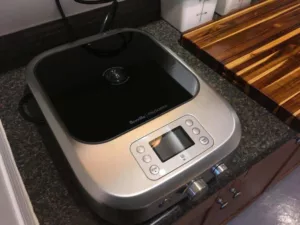

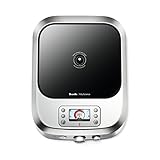




Hi,
Thanks for a great site, it has helped me a lot! Your site is truly a valuable resource not the less for the Control Freak.
I have a general question for you (or anyone who has a Control Freak for that matter), in regards of boiling water. If I set it to the recommended settings (as per the manufacturer themselves, stated here: https://thecontrolfreak.breville.com/), which are:
Mine seems to never come to a continuous rolling boil, instead it goes up to a boil, then stops boiling and goes down to around ~98,8-99°C (measured with my Thermapen) then up to a boil once again and then back down again. It’s going like this back and forth in a never ending cycle (I’ve had it on like this for 30-60 minutes).
Is anyone else seeing this behaviour, is it expected?
I seem to have some other issues as well, connected to the temperature seeming to have a hard time to stick with the set one, both for pan and probe control.
I would just use pan control for boiling water and set the temperature to 110 (230F). There reason you need to it a bit higher than the boiling point to maintain a rolling boil is that boiling water is the most energy intensive thing for a cooktop to do. If you’re just asking it to maintain a pan temperature of 100C, it’ll drop instantly in temperature when it tries to pause the induction burner.
Since you are controlling the pan, it can get slightly hotter than 100C. This stored energy in the pot will come in handy when the Control Freak pauses for when the Control Freak cycles on and off. Water will self-regulate and never get hotter than 100C before turning to steam.
Nonetheless, I find boiling larger amounts of water to be difficult for any 1800watt induction burner. Eventually the Control Freak will need a longer pause (I presume to protect the electronics from overheating) and you’ll have moments where the water isn’t at a rolling boil. Things still take just as long to cook as it doesn’t drop much below a boil, but it can be frustrating. That’s why I use my regular full sized induction cooktop anytime I’m boiling large amounts of water (say for spaghetti).
I hope this was a helpful explanation.
Hi,
Thank you for taking the time to reply with this thorough answer, appreciated!
I do agree and confirm, that setting it to pan control and a bit higher than 100°C will enable a rolling continuous boil. I just find it peculiar that they say this about it in their own web app:
“Boil
A wet method of cooking, where a liquid is heated to its boiling point, producing large gas bubbles that continually rise to the surface.”
And then this specific setting for water:
“Set temp
100°C
Sensor
Probe Control
Intensity
Fast”
Yet, this setting doesn’t seem to be working optimally, since it can’t keep it on the boiling point of 100°C even for a small amount of water such as 1-2 liter. Hence I had to ask, if this setting worked for anyone else and my induction burner was acting strange, or if this is the expected behavior.
Then I guess that their web app is stating incorrect information, or if by boiling they mean that is should behave like this, but I guess that’s up to the manufacturer to answer. 🙂
Good to know that it’s not only mine at least!
Just ordered my Control Freak!
Awesome! You’ll love it!
1. I have a chart here, is this what you are looking for? https://www.sizzleandsear.com/precisioncooking/ , there’s also this provided by Breville: https://thecontrolfreak.breville.com/
2. There’s conflicting information about maximum weight. The manual says one thing, but there are some official Breville videos that say another thing. I’ve put a 12 quart pot full of stock on mine without any problems, if that helps.
Thanks for a helpful run-down. I had a question. When you’re sautéing, do you need to lift the pan off the Control Freak when you want to give it a good shake, or have you found that sliding it back and forth is ok from the point of view of scratches or sensor damage? I’ve seen some videos where chefs do the latter, and the manual is silent on the issue. Thanks.
Sorry about the late reply, been a busy time at work.
When I’m sautéing, I will give it a shake without lifting. My unit has developed some small scratches, just like any ceramic top that gets used well. No major scratches though. I see it as a sign of use.
Have you tried Rocook?
No I haven’t. Have you? Got any insights on it?
Tyler, my Control Freak just arrived a few minutes ago. The wife is unhappy about its size. It doesn’t fit conveniently on our kitchen counter. She thinks we won’t use it! Hah! Thanks for this page. I’ve been looking all over the web for a sheet of temps just like this. Put it into an Apple note. Thanks so much!!
I did test it out to make sure it works. So far so good. I’m going to needs some pans. First a stock pot. Unfortunately, I already own several, none of which is induction friendly.
I think you posted something a little while ago about using this with a pressure cooker:
‘Pressure cooked on the unit for the first time tonight. I calculated at my current elevation the temperature in the pot would be ~249F before the regulator kicked in. I ended up having going to turn it down to 230-235. I think it makes sense that the contents could be hotter than the pot because they are under pressure?’
It was the only post I could find on this. I finally got an induction-capable pressure canner: it has a gauge going from 0 to 15 PSI. I had the exact same experience (although in celsius rather than fahrenheit). It’s said that at ~0 elevation (I am at 29m–ie. 95 feet–according to a fine-grained topographic map) it’s meant to be 109C (228F) inside the pressure canner for 5 PSI; 115C (240F) for 10 PSI; and 121C (250F) for 15PSI. I found the pressure stabilized when setting the control freak pan temperature to 104C (5 PSI); 110C (10 PSI); and 115C (PSI).
In fact the pressure gauge readings obviously measure the relative difference of pressure outside and inside the pot. (At 0 elevation, the outside pressure is meant to be 14.7 PSI). So ‘5’= absolute 19.7 PSI; ’10’=24.7 PSI and ’15’=29.7 PSI. And I note that the quoted temperatures can then be seen to be identical to the boiling points of water at the specified pressures.
Putting it another way, the pressure should only be ‘1.7’ on the gauge (16.4 PSI absolute) for 104C, ‘5.3’ (20 PSI absolute) for 110C, and ‘9.8’ (24.5 PSI absolute) for 115C.
I thought perhaps my now ageing control freak was out of spec until I saw your post.
Did you ever find out why there is this discrepancy?
The quoted temperatures all based on the assumption that inside the pressure cooker, the air has been evacuated. Is that assumption true? Has anyone actually measured the internal temperatures of pressure cookers? It seems pretty unlikely that an aluminium pot used to heat the contents would remain cooler than them.
My measured temperatures are not consistent with a lower outside pressure like what would be seen at higher altitude. At ‘5 PSI’, it’s consistent with outside pressure being 11.4 PSI; at ’10 PSI’ with being 10 PSI; and at ’15 PSI’ with 9.5 PSI–equivalent to being at 2100m (6900 feet), then 3100m (10,200 feet) and then 3500m (11,500 feet).
I think it’s the air left inside the pressure cooker.
https://www.engineeringtoolbox.com/steam-air-mixture-d_427.html :
‘The Partial Pressure in a Mixture
The partial pressure is the pressure exerted by each component as if it was occupying the same volume of the mixture. The effective partial pressure of the steam can be expressed as:
ps_effective = vs / V p (2)
where
ps_ effective = effective steam pressure, absolute (Pa, bar, psi)
vs = volume of steam (m3, in3)
V = volume of mixture (m3, in3)
p = absolute pressure (Pa, bar, psi)
Reducing the part of steam reduces the effective steam pressure. Increasing the part of steam (until 100%) increases the effective pressure.
Example – Mix of Air and Steam
The effective pressure in a steam/air mixture made up by 3 parts steam and 1 part air, with total pressure 5 bar absolute, can be expressed as:
ps_effective = (3 parts) / (3 parts + 1 part) (5 bar abs)
= 3.75 bar absolute
Important! Since the steam has an effective pressure of 3.75 bar instead of the pressure of 5 bar a, the mixture would have a temperature of approximately 139 oC rather than the expected saturation temperature of 152 oC. This has a major effect on the heat transfer capability of an heat exchanger.’
You can in fact determine the proportion of air in the pressure cooker or canner.
For my ’10 PSI’ (24.695 PSI absolute) at 110C:
effective partial pressure of the mixture = ((x parts steam) / (x parts steam + y parts air)) (total absolute pressure)
110C equates to an effective partial pressure of 24.695 (~25), and we know the total absolute pressure was measured at 20 PSI for 103C.
20 = ((x parts steam) / (x parts steam + y parts air)) * 25
-> 4/5 = x/(x+y)
-> 4 parts steam to 1 part air.
For ’10 PSI’, it’s ~1 part air to 4.3 parts air; for ’15 PSI’ it’s ~1 part air to 4.7 parts steam.
Near enough to the same figures: about 4-5 parts steam to 1 part air.
And that’s after having let it vent for ten minutes as per the instruction manual before closing off the vent.
As for the control freak, it’s very good. I don’t think I’d be able to go back to a regular burner now.
When dialing in a temperature, how accurately does it hold it and how often is that temperature reflected in the temperature of the pan
The feedback is pretty immediate and you will get real time updates as the temperature rises.
If your pan is small and you are a high intensity, there might be a little overshoot and temperature will have to come down. Once it comes down, it maintains the temperature within 1-2 degrees. You can avoid the overshoot by lowering the intensity to “low” for smaller pans.
Thanks so much for this. I’ve been looking at the Control Freak, and wished there was someplace with some recipes, or as you have also done, created a list of temps for various things. Bravo!
Thanks Keith! Be sure to check out the Facebook group if you decide to purchase a Control Freak (see link at top of article).
For the sous vide aspect of the Control Freak, I can’t find anything that compares it with a dedicated water circulator like the Joule. Does a Control Freak fully replace the need for a dedicated circulator, or does it have any gaps, such as the need to occasionally stir the water, that a dedicated circulator may not have?
I use it for short sous vides (1-2 hours) and will occasionally give it a stir. It does lack circulation which would make me worry for longer sous vides. That being said, I find myself sous voiding more often as it’s more convenient than an immersion circulator.
I understand that it was a typo but sous voiding sounds like what someone who is avoids sous vide does. You may have coined a new phrase.
Haha. Good catch!
What is the largest size pot it will take? I have been thinking of getting one for a while now. I make a lot of marmalade and jams. My old induction plate has gone to heaven, my jam pot measures 24cm / 9 + 1/2 inches.
I use pans with a 10-inch diameter base all the time (12-inch frying pans and large sauté pans). The manual says the maximum size should be 10 inches. There’s nothing stopping you from using something slightly bigger, but you’d want to make sure it is made out of materials that conduct heat well (e.g. thick layers of aluminum or copper sandwiched between the induction-compatible stainless steel)
Just got a control freak as I do a wide range of technical cooking, particularly making artisanal gelato and all sorts of pastry/candy “related” (add ins). Loving it so far. I’ve found a couple large supposedly inductive pots it doesn’t like, for example a 6QT all clad stainless (couple years old) and most cheap Chinese stainless. Seems happy with most of my quality stainless that isn’t big, cast iron, and even a big enameled cast iron crock (good for deep frying). Should be more programmable as you mentioned (I’m a computer programmer too :-)). Are there any handy guides online for the temperatures for common tasks like sweating onions/soffrito, omelets, etc. Most recipes and resources for stove top cooking are not specific about temperature unfortunately.
Glad to hear that you are enjoying your Control Freak. Breville/Polyscience has sure put together a quality product. A lot of my friends balk at the cost initially, but when they see it’s capabilities and how it’s replaced my stovetop 95% of the time (I only use my full sized induction range for boiling large amounts of water because of the increased wattage), they come around. It certainly has revolutionized the way I cook; I’m sure you will also get as much enjoyment out of it as I have.
That Sucks about the 6QT All Clad. I have 2QT, 4QT, 8QT, and 12QT All Clad triply and it all works. So do my D7 frying pans. Does. your 6QT work on other induction ranges? The only time I’ve had issues with it not detecting induction cookware is when I tried the All Clad 0.5qt butter warmer. The surface area was too small for the Control Freak.
I started to put together this resource. It hasn’t been updated since last summer, but feel free to have a look. I’m always looking for suggestions: https://www.sizzleandsear.com/precisioncooking/
How is the breville holding up?
They are both holding up fine. Just finished recording this video where I used one of them: https://www.sizzleandsear.com/recipes/extra-tender-beef-and-broccoli-recipe/
I’ve boiled water. If I’m just using a 4 quart pan, I have no problems with the Control Freak… I haven’t timed it but I don’t find myself getting impatient.
If I’m boiling water in my 8 quart pot (e.g. pasta), I tend to find myself going to my more powerful induction range as it can take quite some time to get to boil. Don’t mind doing that as when I’m boiling water I don’t require precision and will trade it for speed. Can only boil large amounts of water so fast at 1800 watts.
has any one boiled a large amount of water with the breville control freak and what were your results?
Hey Naomi. Luck would have it that I will be receiving a Hestan Cue shortly for testing. My goal is to have a review up by the end of the summer. Stay tuned.
Wow. This looks amazing! I own the Tasty One Top and have been disappointed in it 🙁 Your experience with the Control Freak seems to live up to the expectations I had for the Tasty. Still trying to decide between the Hestan Cue and the Breville Polyscience Control Freak. Do you have experience with the former?